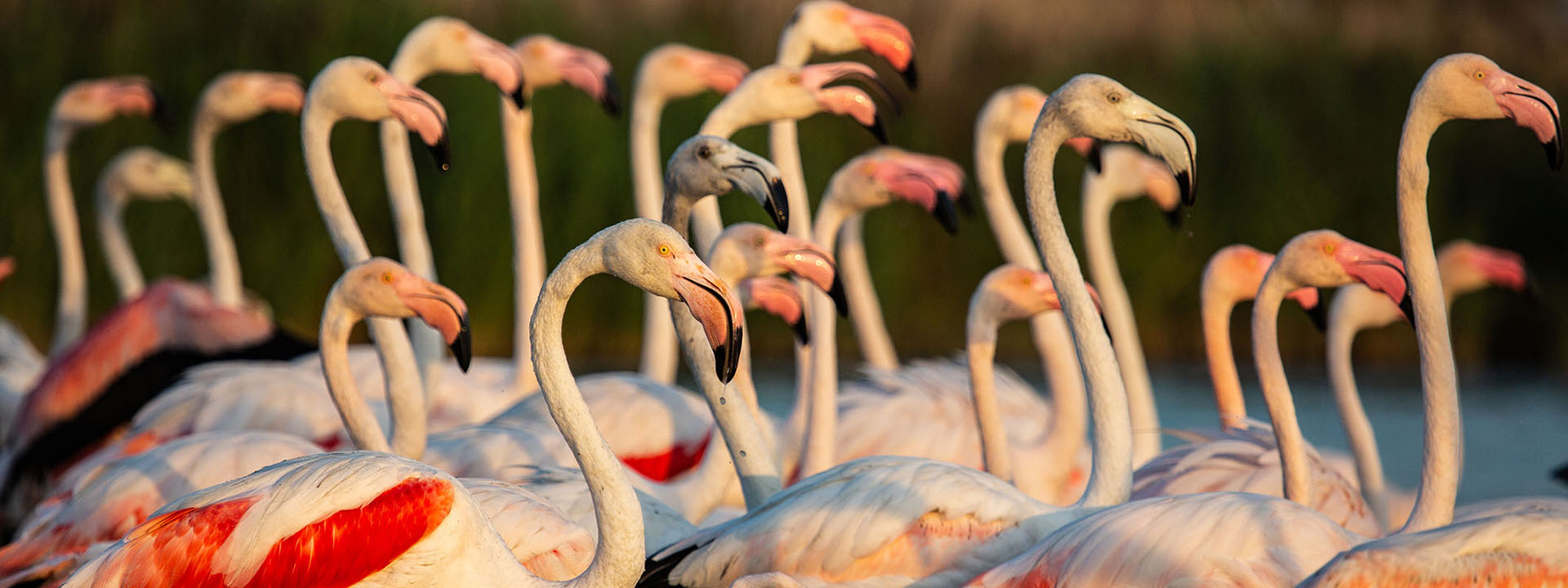


The Camargue is located along the Mediterranean Sea in the department of the Bouches-du-Rhône. It is restricted by the city of Arles on the north side and by Saintes-Maries-de-la-Mer on the south side. The west and east side are both surrounded by the arms of the Rhône.
The Camargue is the largest humid zone in France. It is extended over 85 000 hectares and has 75 km on the sea coastline.
It is one of Europe’s region with the most important amount of biodiversity. Home to many animals and plant species, including the famous pink flamingos living amongst the semi-feral bulls.
An important irrigation network is used to maintain this exceptional natural habitat and farming activities essential to the habitants living there. A green zone called Le Parc Naturel Régional de Camargue was established in 1970.
The Domaine de Méjanes is located in the heart of the Parc Naturel Régional de Camargue, along the Vaccarès Pond’s conservation area. Part of the domain’s 600 hectares is to be visited on foot, cycling, horse riding, or aboard the Petit Train de Méjanes.
The rice and salt productions (salted swamps of Salin de Giraud and Aigues Mortes) are the region’s main agricultural wealth.
Today, 150 hectares are dedicated to rice production on the Domaine de Méjanes. Sustainable agriculture goes hand in hand with the biological one. It represents today a third of the domain’s farming.
The symbol representing the Camargue is a cross created in 1926. It is imagined by the Marquis de Baroncelly. It represents the faith (cross), the hope (anchor), and benevolence (heart). The trident ends, symbolize the gardians (guardians of the farmed bulls and horses living partly free).
The gardians breed the partly free bulls, mounting their loyal “Camargue horse”. This little rural white horse has become the symbol of the Camargue.
Every 1st of May, it is honored during the Gardians Celebration. All the region’s manades are represented with the gardians and their horses. The women wear the traditional Arles costume.
The bull is a true star in Camargue. It is the center of attention of all the local celebrations called ‘fêtes votives’. The courses camarguaises are organised in the arenas of all the villages from April to October. None of the bulls are sentenced to death during these events.
The raseteurs dressed in white have to collect ‘attributs’ (little ropes and rosettes) tied around the bull’s horns before the race. The most courageous of the bulls are called ‘cocardiers’ and are considered ‘idols’ by all. When they pass away, they are buried standing up in a white shroud, with their head facing the sea. A statue in their image is raised.
The Manade de Méjanes is installed on the Domaine de Méjanes. The domain’s visitors can discover the reared bulls and Camargue horses during their horse ride, an educational show presented by the manade, or a ride aboard the Petit Train de Méjanes.
The Manade de Méjanes belonging to the Guillot family also takes part in many courses camarguaises.